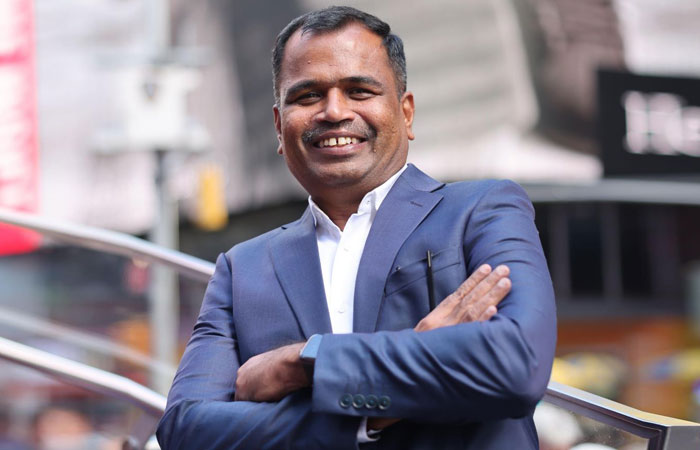
Tirupur cluster complies with social and environmental standards
Tirupur Exporters’ Association (TEA) was set up in the year 1990 in Tirupur under the leadership of Dr A Sakthivel and strived for the development of exports and also Tirupur. KM Subramanian, President, Tirupur Exporter’s Association (TEA) and Chairman, KM Knitwear, in this interview with Divya Shetty, shares the current status of Indian knitwear industry and how is TEA helping in this endeavour.
How is TEA capitalising on the rising demand for knitwear, and what strategies are in place to meet the growing need for knitted textiles?
We do foresee the growth opportunities for the knitwear products in the global market.
Tirupur cluster has created infrastructure and the respective units have increased their machinery capacity to meet the requirements of the buyers and have been judiciously following the compliances in the Social and Environment front. The product diversification into manufacturing of MMF products, Organic garments, and fashion garments are the game changer and Tirupur is already moving in that direction and taking the right strategies to meet the growing demand for knitted garments.
Currently, active wear, swimwear, sportswear, and performance wear are the fast-growing segments in the knitwear industry.
Could you share some of TEA’s recent initiatives in sustainable knitwear production?
Tirupur have taken efforts and started to achieve sustainability ten years back and implemented Zero Liquid Discharge, recycling 130 mld first of its kind globally. Tirupur industry has also made investments in wind and solar power, Totally 2000 MW, eight times more than the requirements. Water conservation, rejuvenation of water bodies, and plantation of 16 lakh trees have also been carried out by Tirupur industry. Recycling of PET bottles and cutting waste for manufacturing garments are also being done in Tirupur cluster. Steps are being taken for traceability of waste. We have discussed with the INTERTEK CEO to study the sustainability of Tirupur and he has assured us that carry out the study and Tirupur’s journey towards sustainability.
Can you give us some information about the performance of the Indian knitwear industry in global scale?
Indian knitwear industry comprises 90 per cent of MSMEs and requires govt support in terms of bank Interest, and packing credit to be competitive and withstand in the global market.
How is TEA embracing the technological innovations to enhance the production process and deliver high-quality knitwear products to your customers?
Tirupur Textile Cluster units installed various global-level imported machinery from yarn to final products, which help to produce quality products in their production and also to compete at the global level. Our units already started using innovative technology in their process, which will help to save their time and increase their production along with quality.
How do you view the future of the Indian knitwear industry? Also share the Association’s growth plans
The future of the Indian Knitwear industry would be good as China +1 policy is perceived by importing countries in the global market and the infrastructure, machinery capacity, efforts to reach sustainability, and preparedness of Tirupur Exporters will trigger the growth of exports. Moreover, the signing of an agreement with the UK, most probably by this month’s end will increase our export growth by 30 per cent. We are also expecting the signing of an agreement with EFTA will happen in the near future and that will also help for the growth of the industry. The government has already initiated negotiations with Gulf Cooperation Council (GCC), New Zealand and once it is materialised, will also contribute to the growth of our Exports.
The Association has been organising programs regularly by inviting experts in the MMF field and helping our members to go for product diversification, and manufacturing of MMF products as it is an order of the day in the global market. Fibre wise, the global consumption is in the pattern of 75 per cent man-made fibre and 25 per cent cotton.



